

Even if seen poorly, with its gaudy, cartoonish-looking profile and long tail, this square-headed bird is completely unmistakable.
Meet the Long-tailed broadbill
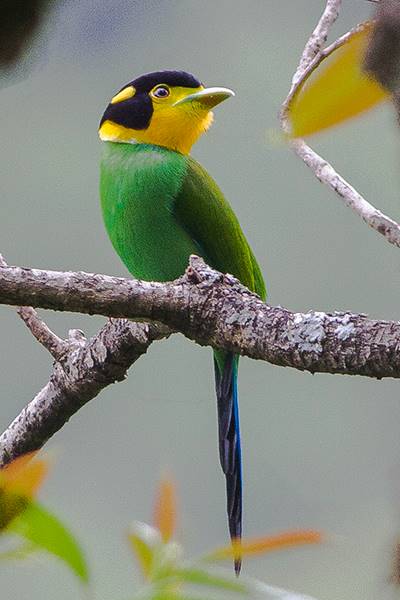
“File:Long-tailed Broadbill Pangolakha Wildlife Sanctuary East Sikkim Sikkim India 21.04.2016.jpg” by Dibyendu Ash is licensed under CC BY-SA 4.0.
The long-tailed broadbill (Psarisomus dalhousiae), is a species of bird that is found in the Himalayas. Adult members of this species have a bright yellow throat and face, with another yellow patch behind each eye.
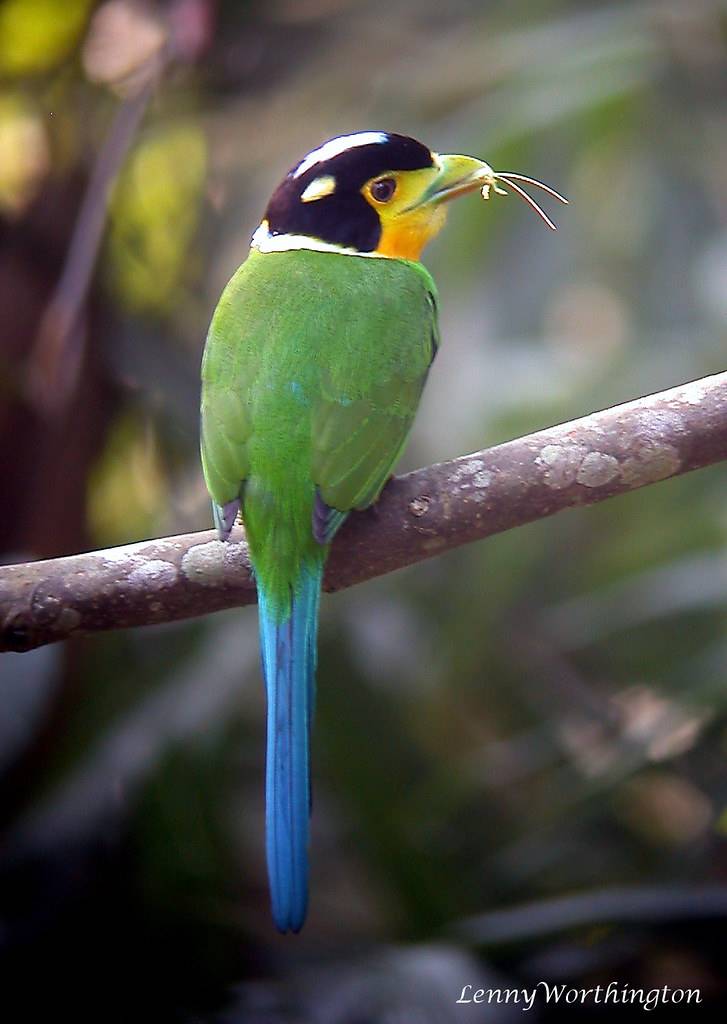
“Long-tailed Broadbill Psarisomus dalbousiae (Jameson, 1835)” by LennyWorthington is licensed under CC BY-SA 2.
Their tails are long and blue, though black underneath, they also have a strong, broad bill that is yellowish-green, with lighter edges.
Juveniles have a shorter tail, green head, and generally overall duller plumage when compared to adults.
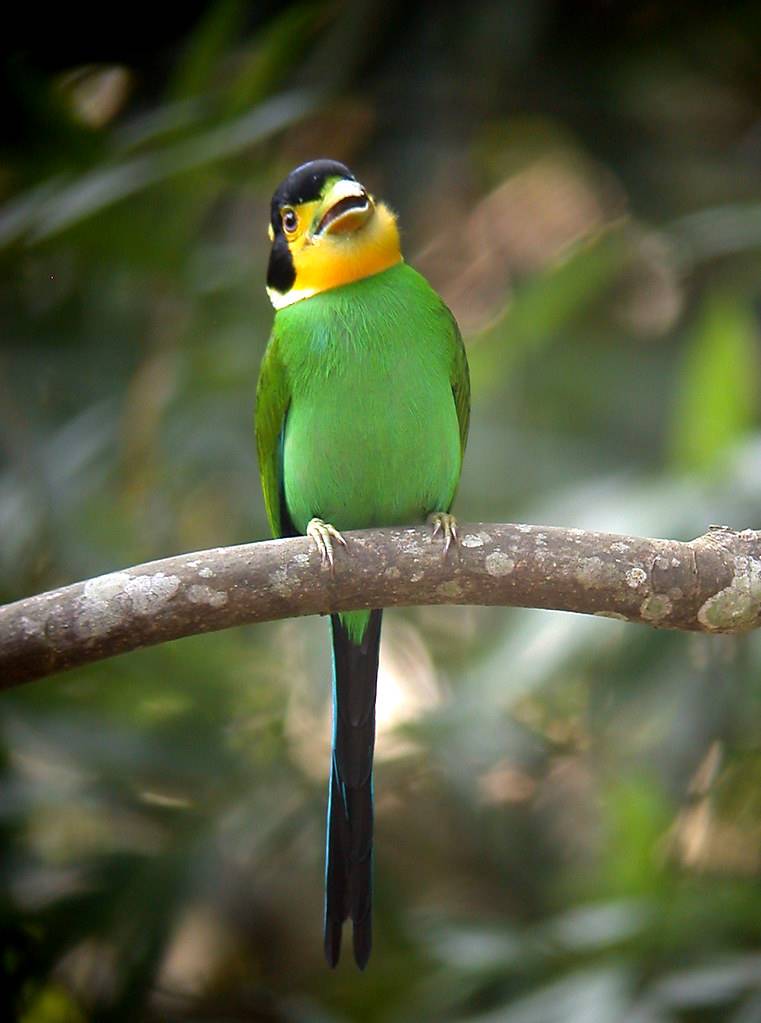
“Long-tailed Broadbill Psarisomus dalbousiae (Jameson, 1835)” by LennyWorthington is licensed under CC BY-SA 2.0.
The long-tailed broadbill inhabits a region in the Himalayas in countries such as Myanmar, into South-East Asia down into the Malay Peninsula to Sumatra and Borneo.
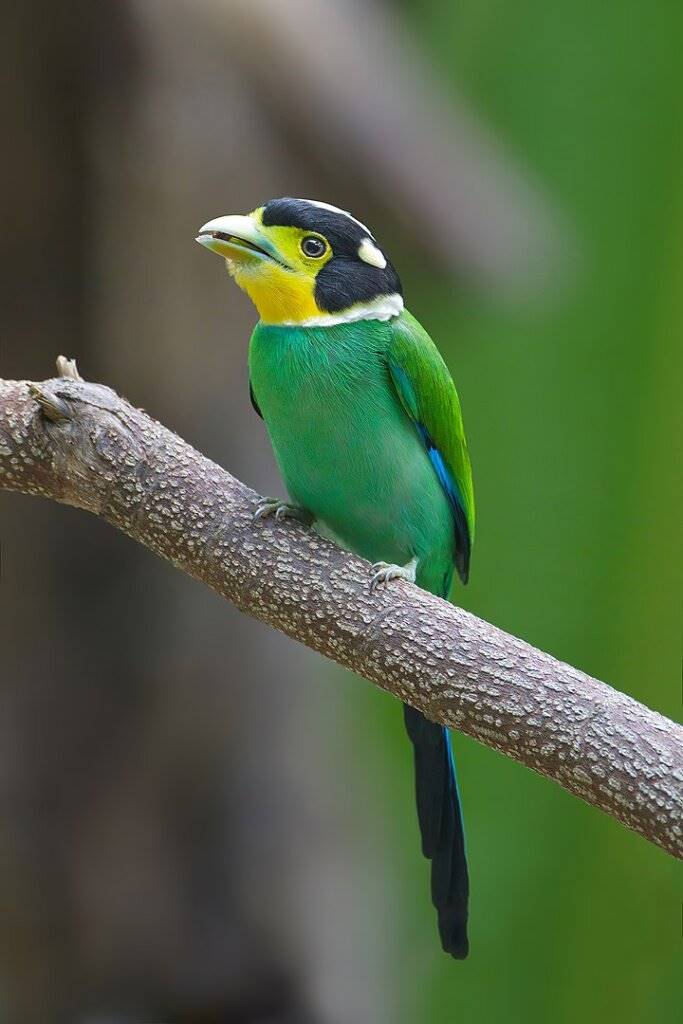
Photo Courtesy of JJ Harrison (https://www.jjharrison.com.au/) / CC BY-SA 3.0
A resident, non-migratory species, long-tailed broadbills are more often than not found in broad-leaved forests. Preferring forests, streams, and creeds, tropical and subtropical lowland forests, and tropical, subtropical moist mountain forests.
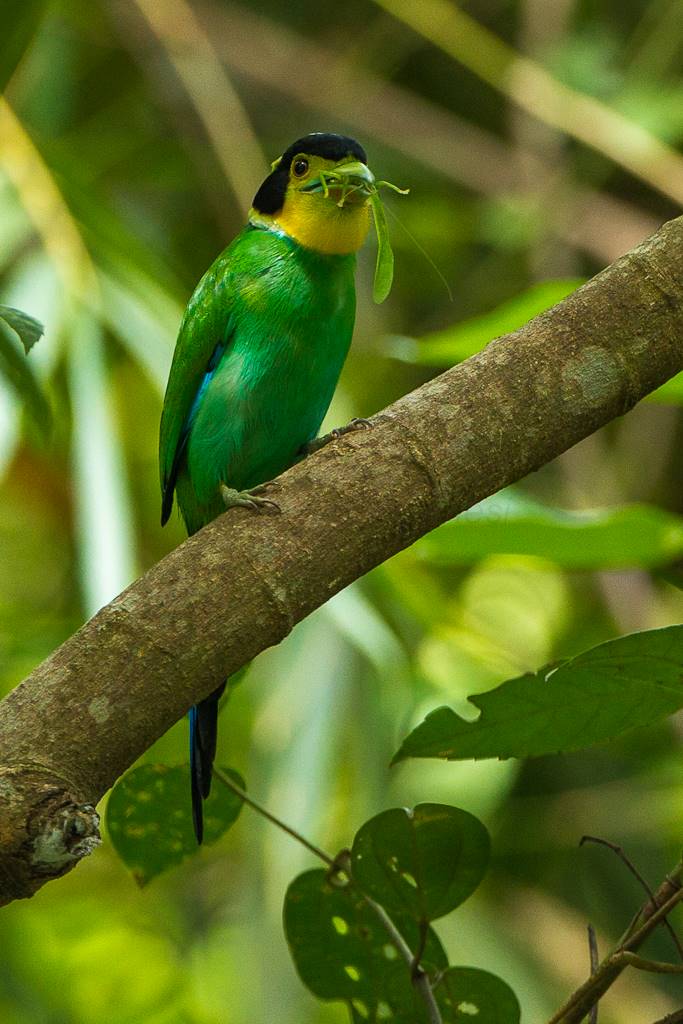
“Long-tailed Broadbill – Kang Kra Chan NP – Thailand_S4E4754” by fveronesi1 is licensed under CC BY-SA 2.
Primarily insectivorous birds’ long-tailed broadbills can often be found foraging in forests for small insects. However, they may occasionally feed on frogs, berries, and some fruits.
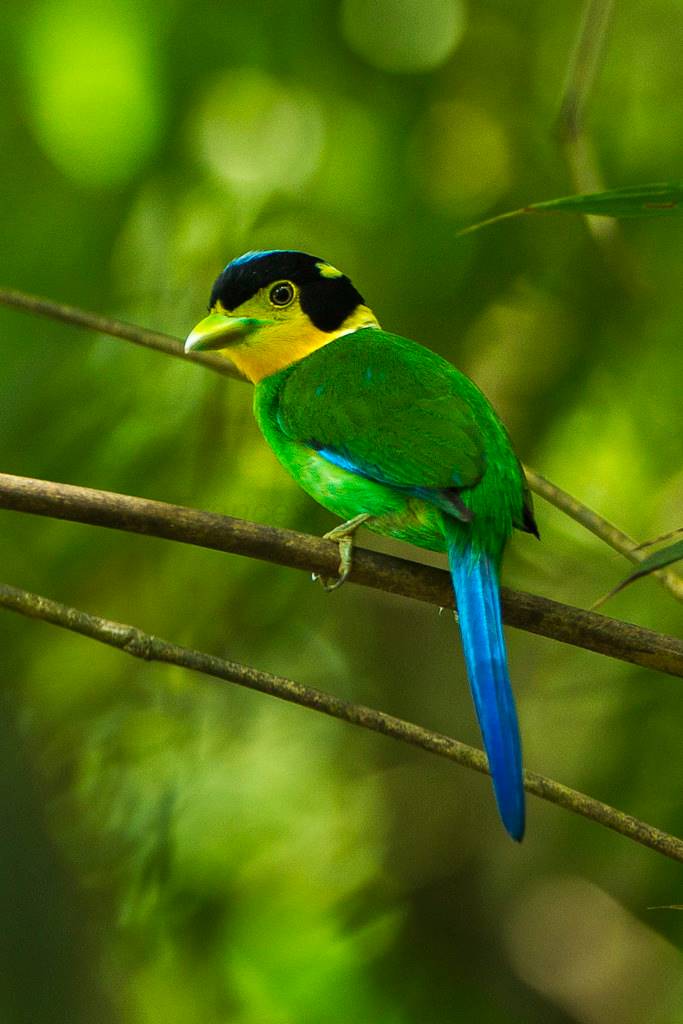
“Long-tailed Broadbill – Thailand_S4E4817” by fveronesi1 is licensed under CC BY-SA 2.0.
During the breeding season a large pear-shaped nest is built, often attached to the branch of a tall tree. It consists mostly of fine roots, dead leaves, creepers, and moss. Up to 6 eggs are laid which both the male and female will incubate until hatched.
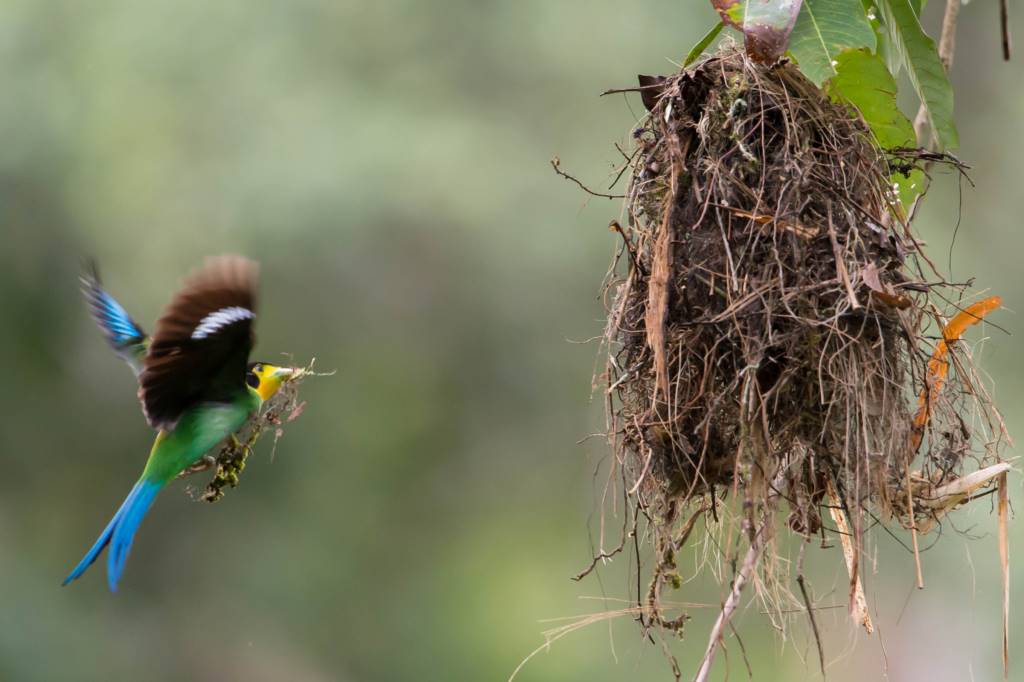
“File:Long-tailed Broadbill (Psarisomus dalhousiae).jpg” by Jason Thompson is licensed under CC BY 2.0.
According to the ICUN Red list of threatened species, the long-tailed broadbill is of least concern. Being fairly common throughout their range, they are found in many national parks where they are protected.
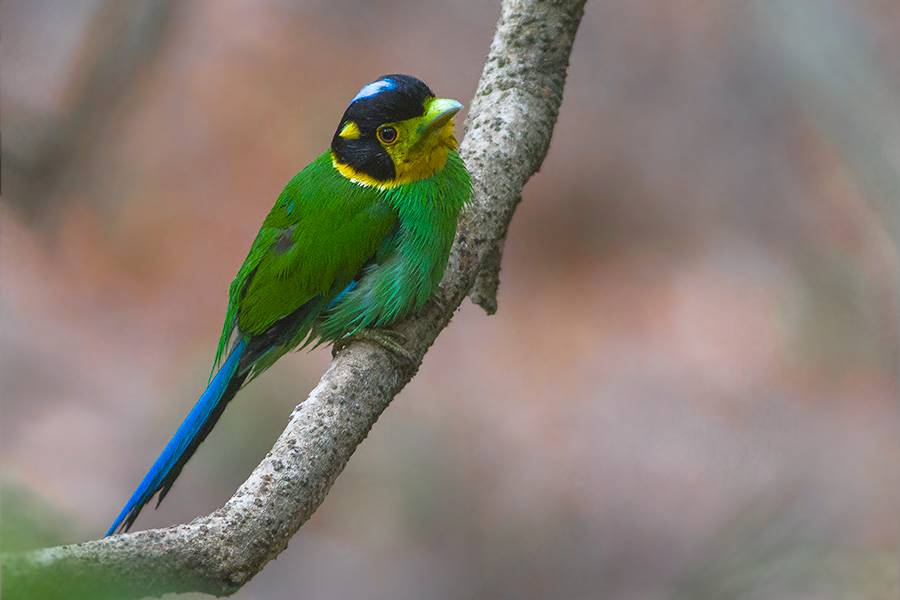
Dibyendu Ash is licensed under CC BY-SA 4.0.
